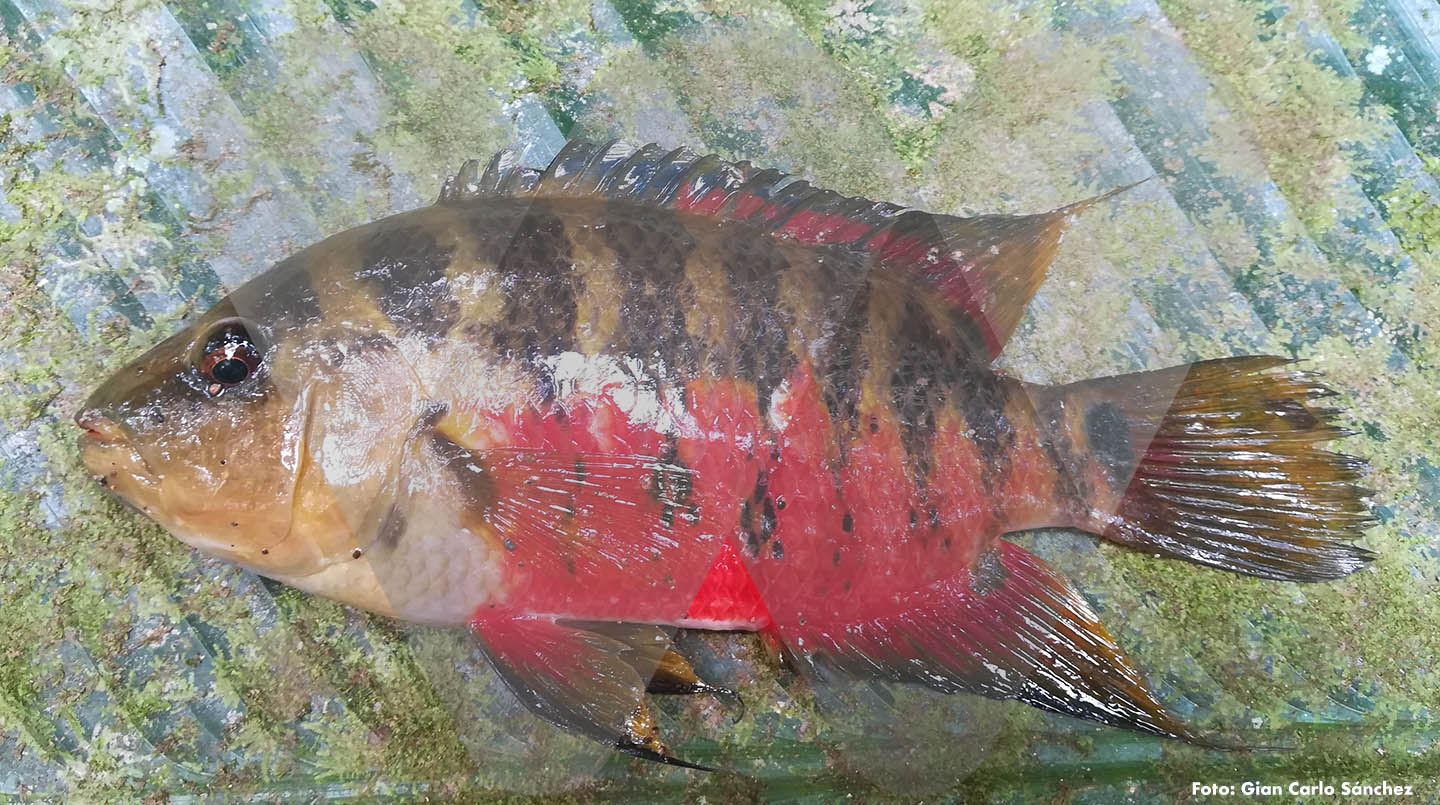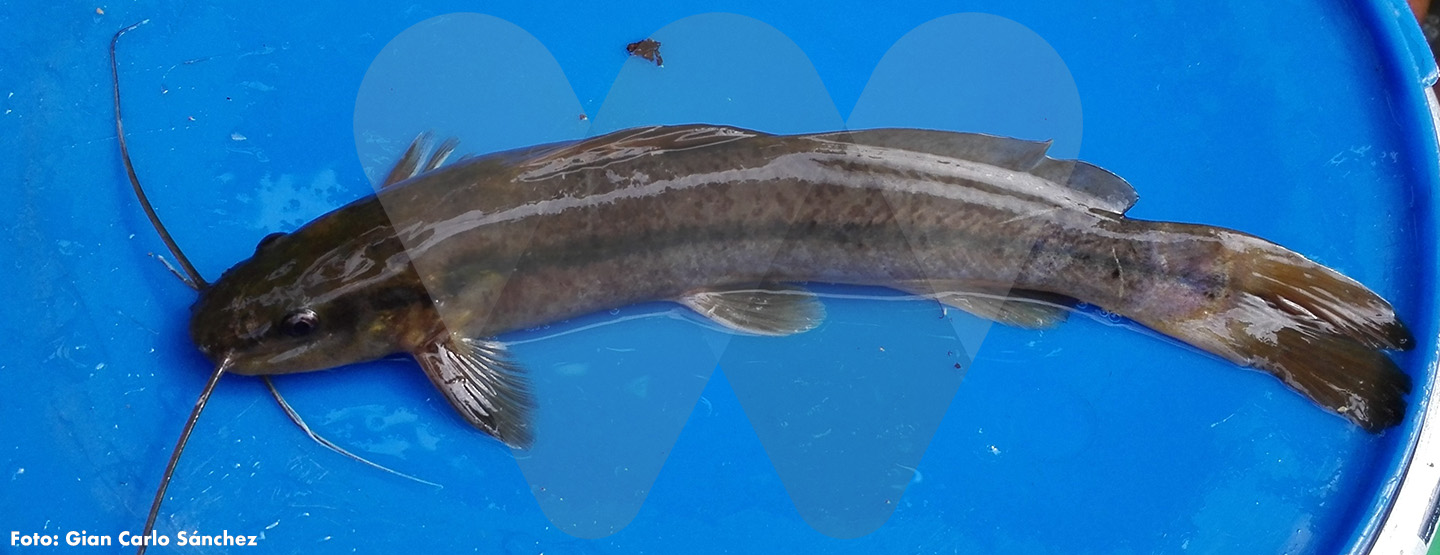Freshwater fish also claim sustainability
 Mojarra - Mesoheros atromaculatus
Mojarra - Mesoheros atromaculatus
The characterization performed in a zone of the” Integrated Management Regional District El Encanto de los Manglares del Bajo Baudó” detected that, although the freshwaters where the fish live are good, there is a reduction of some populations due to inadequate fishing practices.
In Bajo Baudó (Chocó), the number of species of freshwater fish that live in its rivers has not yet been estimated. Scientists admit that few studies have been made in this region and, consequently, the knowledge obtained for these organisms has been frequently strengthened with the testimonies of the community and the experiences of the fishermen.
But history changed, at least partially, with the “Participatory characterization of conservation targets of the Integrated Management Regional District El Encanto de los Manglares´, within the Concosta Community Council. This activity, performed by WCS Colombia, Concosta and Codechocó opened a chapter for the study of freshwater fish, a valuable group for the diet of the riverside populations.
During a study that lasted slightly over two weeks, Gian Carlo Sánchez, environmental administrator of the Universidad Autónoma de Occidente, identified 36 species belonging to 14 orders and 22 families. Seven of these species are anfidromous, a term that means that adults live in freshwater, where they reproduce and spawn, but the larvae develop in the coastal zone and then migrate upriver, as postlarvae, looking for streams and river zones without any salinity influence, where the substratum and the environments are optimal for their growth and maturity. Additionally, seven species of marine-estuary origin that endure salinity changes and live mainly in lower river zones were registered.
Some species that have been reported in the region, but were not recorded during this first characterization exercise, were sardines of the genera Argopleura, Astyanax, Creagrutus and Gephyrocharax, the nayón (Pseudocurimata lineopunctata), the jorobadas (Roeboides occidentalis) and the spotted hatchetfish (Gasteropelecus maculatus). The latter is of interest to the ornamental fish trade due to its peculiar appearance. Additionally, other species that live in the region and are known by fishermen, but were not captured in this project, are the capitán (Batrochoglanis trasmontanus), the viringo pintado (Gymnotus choco), the musungá, the Shoulderspot needlefish (Strongylura cf. scapularis) and the Trahira (Hoplias malabaricus).
To accomplish their task and obtain this preliminary information, Gian Carlos and local assistants used different capture methods on the beaches of the main watercourse of the Capiro River and some tributaries such as the streams Bacao, Chigorodó, Dioselina and Teteral, as well as the stream Gemías, tributary of the Hijuá River. Gian Carlo, who led the study for WCS Colombia, did not only resort to traditional fishing methods such as the chinchorro (fishing net), the atarraya (cast net) and the trasmallos (gillnets); he also used underwater observations to identify cryptic and very small species. Moreover, his conversations with local inhabitants gave him insight to the use and local perceptions of this resource.
Contaminated rivers
“In general, the water bodies assessed maintain a good quality in the hydric resource itself as well as in the structure of its riverbank forests, which guarantees the ecological integrity for fish. However, the effects of wood extraction activities are evidenced in some streams, with the accumulation of wood fragments or the loss of connectivity with the rivers. This, as a consequence of the buildup of material of vegetable origin and sediments at the mouths”, concluded the researcher.
 Mungulí - Eleotris picta
Mungulí - Eleotris picta
Gian Carlo was also able to establish that 10 species of freshwater fish are used for subsistence and that their use is closely related with the temporality of the crops. The inhabitants of the low zones work in farms along the rivers and usually fish, mainly with nets placed at stream mouths and in deep pools.
Conflicts with the use of the resource are the downside of this activity. Inhabitants report an evident decrease in size and fish populations that were once abundant - they say – have decreased, among other things because people of communities foreign to the territory and living in high regions, faithful to old fishing practices, regularly use native toxic plants (barbasco) that are harmful for small fish and poison water bodies.
“The activity of characterization of freshwater fish met almost all expectations, taking into account the existing knowledge gaps for the Bajo Baudó region, on the diversity of these animals in the continental zone. I must point out that the result of 36 species is higher than the recorded numbers for nearby zones, such as Cubarradó (23 species), Jurubirá (16), Valle (21) and Juradó (9), besides representing 68.4% of the total reported for all the Baudó basin”, concluded the researcher in his analysis.
But he adds that progress is needed in the sustainability and good use of the resource, as the relation of local communities with the region’s fish and rivers or streams could generate not only conservation strategies but management strategies, adjusted to the territory’s reality, because the existing subsistence fishing deserves being sustained over time.
 Sábalo - Brycon meeki
Sábalo - Brycon meeki